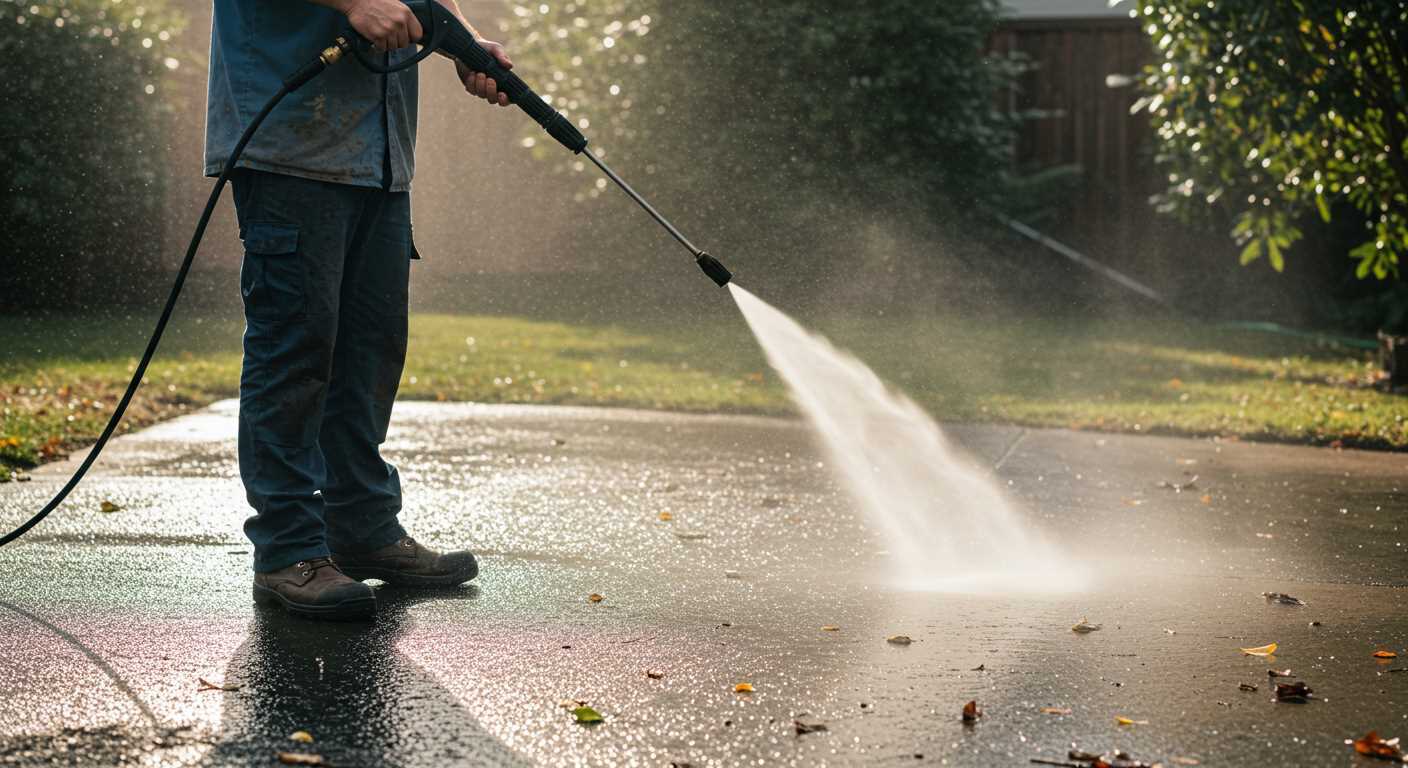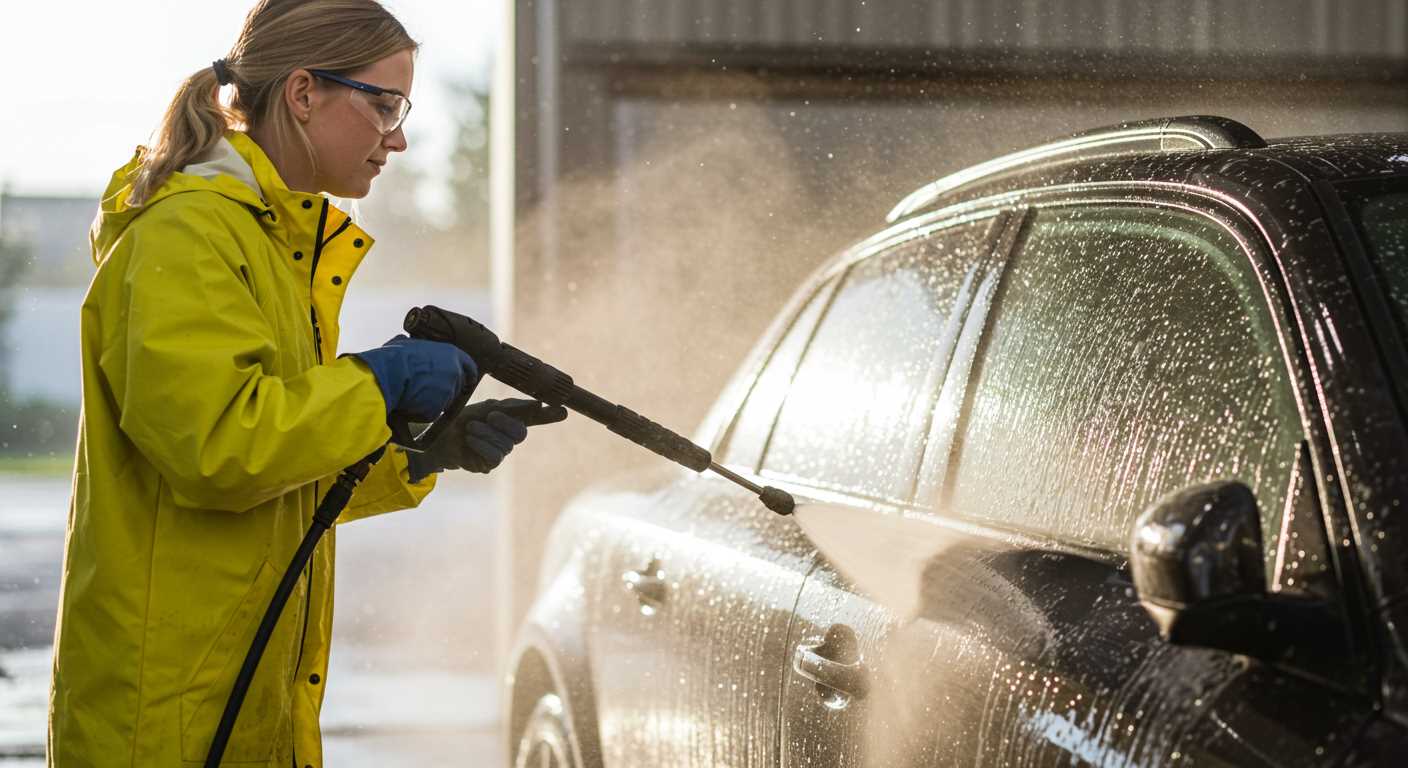



To incorporate detergent into your cleaning routine, look for a dedicated dispenser on your machine. Most units come equipped with a reservoir specifically designed for cleaning agents. Fill it with your chosen solution, ensuring not to exceed the maximum fill line indicated on the container.
Next, switch to a low-pressure nozzle to optimise foam application. Many units have interchangeable tips, and selecting the correct one allows for an even and thorough spread of the detergent. Make sure to spray the solution onto the surface you wish to clean, allowing it to sit for several minutes to break down grime effectively.
Lastly, rinse the area with high pressure to wash away both the detergent and loosened dirt. Adjusting the nozzle back to a higher pressure setting is essential for a complete clean. This two-step process maximises the impact of your cleaner, giving you the results you desire.
Choosing the Right Soap for Your Power Cleaner
Opt for a detergent specifically formulated for your cleaning device to achieve optimal results. Look for products that are biodegradable and eco-friendly to prevent harm to the environment while ensuring effective cleaning. Prioritise options with low foaming properties, as high foam can hinder performance.
Consider the surface you intend to treat. For vehicles, select a gentle soap that won’t strip wax or harm paint. For hard surfaces like concrete, a stronger solution may be necessary to tackle stubborn stains.
Check compatibility with your machine. Some cleaners require specific formulas to prevent damage or malfunction. Always refer to the manufacturer’s recommendations to align with the capabilities of your equipment.
Many brands offer multi-surface solutions that function well across various materials. This versatility can save time and money if you’re cleaning different areas at once. Be cautious of using household detergents; these can be too harsh and may lead to long-term damage.
Lastly, test any new cleaner on a small, inconspicuous area before full application. This ensures the product won’t react negatively with the surface or the materials involved.
Understanding Soap Dispensers and Their Function
Regular cleaning agents cannot simply be poured into the container of a washing device. Specific dispensers are designed to mix the cleaning solution with water before application. These systems ensure optimal dilution and distribution of the cleaning agent, maximising efficiency during operation.
Types of Soap Dispensing Systems
- On-Board Dispenser: Integrated into the unit, this type often features a simple mechanism allowing direct connection to the cleaning solution. It can be adjustable for varying concentrations.
- External Dispenser: This is a standalone attachment, typically used with a hose. It’s perfect for larger jobs requiring more flexibility. Positioning the dispenser can facilitate optimal cleaning performance.
Operational Guidelines
- Fill the dispenser with the appropriate cleaning agent according to the manufacturer’s specifications.
- Ensure the connection is secure to prevent leaks and ensure uniform mixing.
- Adjust settings to control the amount of solution dispensed based on the task’s requirements.
Regular maintenance of the dispensing system is crucial. Clean the nozzle to prevent blockages and ensure a consistent flow during operation. Avoid using incompatible cleaning agents, as this can damage both the dispenser and the equipment. Following these tips guarantees effective application and long-lasting performance of both the unit and the cleaning solutions used.
Preparing Your High-Pressure Cleaning Device for Detergent Application
Ensure the machine is off and disconnected from the power supply before beginning any preparation. Check the detergent tank for residues from previous uses; clean it if necessary. Remove any clogs or blockages in the lines or filters, as these can hinder the flow of cleaning agents.
Fill the detergent reservoir with a compatible cleaning agent, adhering to the manufacturer’s guidelines regarding dilution ratios. If the device employs a siphon system, attach the appropriate nozzle designed for detergent application; this is usually a low-pressure nozzle which allows for the gentle distribution of the cleaning solution.
Check all connections, ensuring they are tight and leak-free. Test the solution flow by priming the system; activate the device briefly to observe if detergent is being drawn into the spraying mechanism. This step is vital to confirm that everything is functioning correctly.
Adjust the pressure settings according to the cleaning task at hand, keeping in mind that lower pressure is often more suitable for applying cleaning agents. Lastly, always refer to the user manual for specific recommendations related to the type of chemical being used, as certain substances may require special considerations.
Connecting the Soap Hose Properly
First, ensure you have the correct soap-dispensing attachment, typically a hose or a nozzle specifically designed for this task. Locate the designated port on your cleaning unit, often labelled clearly, to avoid any confusion during the assembly process.
It’s vital to securely connect the soap hose to this port. Make sure it fits tightly to prevent any leakage during operation. Inspect the connection for any wear or damage that might hinder its performance. A faulty attachment can lead to inefficient product distribution.
Next, confirm that the other end of the soap hose is connected to the soap reservoir. If your machine utilises a separate container, it should lock into place, ensuring a stable supply during the cleaning process. Some models might require you to use a specific type of cleaning agent that integrates seamlessly with their design.
After connecting the hose, check that any valves or switches on your machine are set to the correct position for soap application. This may differ among various models, so always refer to the user manual for precise instructions tailored to your equipment.
Finally, before turning on your equipment, it’s a good idea to run a quick test by briefly activating the cleaning function. This will help confirm that the soap is being pulled through the system properly, allowing you to adjust any connections if necessary. This step ensures a smooth application when you begin your cleaning task.
Adjusting the Nozzle for Soap Usage
To optimise the application of cleaning solution, position the nozzle to achieve a low-pressure spray. This setting allows the detergent to be drawn in effectively while ensuring even coverage on surfaces.
Follow these steps for precise adjustment:
- Identify the nozzle type on your device. A soap nozzle is typically wider than standard nozzles.
- Attach the appropriate nozzle securely. Ensure a snug fit to prevent leaks.
- Switch the machine to a low-pressure mode. Look for settings labelled ‘low pressure’ or ‘detergent application’.
- Test the spray on a surface. Aim for a wide arc that disperses the cleaning solution evenly.
If you encounter issues, recheck the nozzle for blockages or ensure that the detergent is correctly connected. Adjusting the nozzle properly is key to maximising the effectiveness of the cleaning agent, making the task much simpler.
Setting the Correct Pressure for Soap Application
For optimal application of detergent, maintain a lower pressure setting on your device. A range of 1000 to 1500 PSI is generally suitable for most cleaning tasks involving cleaning agents. This helps in ensuring that the formula adheres to surfaces properly without being washed away immediately.
Pressure Adjustment Steps
1. First, locate the pressure control knob on the machine. Adjust it to achieve the desired PSI level.
2. After setting the pressure, activate the pump without the nozzle. This purges air and readies the system.
3. Next, attach the desired nozzle suited for cleaning products, usually one that provides a wider spray pattern.
Table of Recommended Pressure Settings for Various Tasks
| Task | Recommended PSI |
|---|---|
| Car Washing | 1200-1500 |
| Deck Cleaning | 1000-1300 |
| House Siding | 1500-2000 |
| Concrete Surface | 2000-3000 |
Before starting any cleaning task, it’s advisable to test a small area first. This ensures the pressure setting is appropriate for the surface you intend to clean, preventing possible damage. Adjustments can be made based on the cleaning agent’s effectiveness and the surface material. By adhering to these guidelines, you will achieve superior cleaning results with the application of your chosen formula.
Applying Soap Evenly on Your Surface
To achieve a consistent coating of detergent across your target area, start from the top and work your way down. This method prevents streaking and ensures that the cleaning solution flows downward, effectively breaking down grime as it descends.
Technique for Even Application
Utilise a sweeping motion while applying the mixture. Maintain a distance of approximately 1 to 2 feet from the surface, allowing the foam to settle evenly. Overlapping each pass by about 50% will help achieve uniform coverage without missing spots.
Timing and Processing
After applying the solution, let it dwell on the surface for the recommended time based on the detergent’s instructions. This allows the formula to penetrate and loosen tough stains, enhancing the cleaning performance. Avoid allowing the mixture to dry completely, as this can lead to residue that might be challenging to remove.
Cleansing and Rinsing After Soap Application

Ensure thorough rinsing to eliminate any cleaning agent remnants. Start by switching the nozzle to a high-pressure setting. This adjustment avoids leaving any residue that could damage surfaces or leave streaks.
Procedure for Cleansing

Begin rinsing from the bottom and work upwards. This technique helps prevent streaks and ensures that all suds are washed away evenly. Maintain a distance of approximately 12-18 inches from the surface to avoid concentrated pressure that might cause damage. Always move in a systematic pattern, either left to right or top to bottom, to guarantee comprehensive coverage.
Final Rinse Considerations

After the initial rinsing phase, take a moment to inspect the area. Look for spots where residue may remain. If necessary, apply another round of high-pressure rinse in these problem areas. Allow the cleaned surface to dry thoroughly, as this aids in preventing new dirt from adhering to any leftover cleaning agent residues.
Adherence to these steps will significantly enhance the longevity and appearance of your surfaces, ensuring optimal results after each cleaning session.
FAQ:
How do I add soap to my pressure washer?
To add soap to a pressure washer, first ensure you are using a detergent designed for pressure washers. Locate the soap or detergent tank on your machine. If your model has a separate soap tank, fill it with the appropriate soap solution. If it does not, use a soap nozzle, which usually has a wider opening, and mix the soap with water in the bucket. Connect the hose to the water source and attach the appropriate nozzle to the pressure washer. Then, turn on the machine, and the soap will be drawn into the spray as you clean.
Can I use regular dish soap in my pressure washer?
Using regular dish soap is not recommended for pressure washers. Standard dish soaps may create excessive foam and could potentially damage the machine. It’s best to use detergents specifically formulated for pressure washers. These soaps are designed to work effectively with the unit without causing harm and will provide better cleaning results.
What type of soap is best for my pressure washer?
The best type of soap for a pressure washer is one that is biodegradable and specifically formulated for pressure washing applications. Look for products labelled as pressure washer detergents or cleaners. These soaps effectively break down dirt, grime, and stains without harming the surfaces you are cleaning. They often come in different formulations for various surfaces such as vehicles, decks, or concrete. Always read the label to ensure compatibility with your pressure washer.
Why isn’t my pressure washer picking up soap?
If your pressure washer is not picking up soap, it may be due to several reasons. First, check if the detergent tank is empty or if the soap solution is too thick. Ensure that you are using the correct nozzle, typically a low-pressure nozzle, which is designed for soap application. Inspect the suction hose for clogs or kinks. Additionally, make sure the soap setting is activated if your machine has that option. If these steps do not resolve the issue, consult your user manual for troubleshooting tips.










